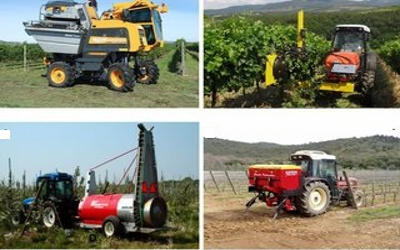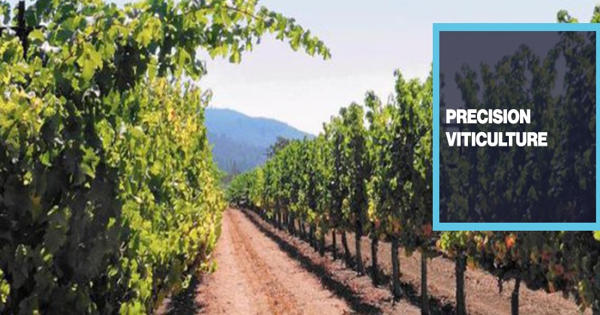Precision Viticulture Technology and its Uses
Precision viticulture is a popular topic in recent years, although the vast majority of vineyards around the world still don’t practice it. It is the application of precision agriculture in the vineyard. This site-specific vineyard management maximizes the administration and production of each plant, accompanying the winemaker in all phases of his activity: we discover how. With GPS, you can always determine your position, and adjust vineyard management according to the specifics of the vineyard zone in which you are.
Once upon a time, the winegrower knew every meter of his vineyard at the drop of a hat and was able to manage each plant differently. Today, on a large-scale vineyard, this is no longer possible. Not without precision viticulture. Precision viticulture aims to maximize the oenological potential of vineyards.
“Precision Viticulture aims at the maximization of the agronomic potential in terms of yield and of quality of productions while increasing their environmental sustainability.”
Principle of precision viticulture
Precision viticulture technologies can help with long-term and short-term cultivation strategies to improve grape quality. The principle of precision viticulture is the same as that of precision agriculture: each vine is treated individually, being attentive to the needs of the plant and satisfying these needs at the exact moment it is required. Recent technological developments have allowed useful tools to be elaborated that help in the monitoring and control of many aspects of vine growth.
The first step towards precision viticulture management is the tracking of the vineyard with a GPS guide. While short-term practices refer to seasonal management of canopy, soil, water availability, etc. in a given vineyard zone. Having a vineyard tracked with satellite guidance serves to geolocate each plant. This information will also make it easier to work in the vineyard with the automatic guidance systems typical of precision viticulture. The introduction of new technologies for supporting vineyard management allows the efficiency and quality of production to be improved and, at the same time, reduces the environmental impact.

Fertilization
Basically, Precision Viticulture targets the spatial variability that exists in a cropping system and considers the ensemble of units that differs in terms of soil, microclimate, and morphology and therefore needs to be managed in a specific way. In PV, the amount of fertilizer given to a stressed plant will not be the same as that given to a vigorous vine. PV aims at the maximization of the agronomic potential in terms of yield and of quality of productions while increasing their environmental sustainability. With precision farming, the winegrower has the ability to provide a dose of fertilizer based on the conditions of each individual plant, or on the goals he wants to achieve. While short-term practices can be applied relatively cheaply and based on “current” vintage so that each variability that occurs naturally in the vineyard can be addressed. The starting point is to understand how much to fertilize, this is based on a prescription map (or vigor map): a map that relates the condition of the plant with the amount of fertilizer it needs. From here, the company can proceed in two ways. They can use variable-rate fertilizers, these are fertilizer spreaders based on the information loaded on the prescription map or rely on good old manual work. Farmers in viticulture are suffering from labor shortages making it necessary, now more than ever, to incorporate technology into their methods of winemaking.
Preservation
With precision viticulture, the defense of a vineyard becomes interconnected and digital. One of the most valuable options already available to wine producers to defend their vines is the Decision Support System (DSS). These DSS have two main components: a system for monitoring the vineyard environment (air, soil, plants, diseases, and insects) and an online application that, by analyzing the data, provides specific information in real-time on how to best treat the individual plants. The data from the different sensors have then to be organized in geo-databases and processed with geostatistical techniques, to describe plant status and the management approaches to be applied to each micro-area. In practice, these systems collect, organize, and integrate information about the weather and the various components of the vineyard and then combine the data and tell the winemaker how best to prevent diseases and pests. All data collected is geo-localized using the GPS. This means that later, after being transferred and processed, these data can be communicated to tractors.
Harvest
Under a system of precision viticulture, even the harvest cannot be separated from the use of a vigor map. Due to the great development of the cited technologies, the optimization of decision support systems makes the implantation of rapid intervention strategies possible. During the most crucial period of the year, the winemaker usually wants to distinguish between grapes of superior quality and those of inferior quality, and bring the bunches to an optimal level of ripeness. Eventually, farmers within the viticulture industry must evolve to stay relevant to the changes in technology and around the world. Achieving these goals becomes easier with precision viticulture, which, through the creation of specific maps, creates all the conditions necessary for a differentiated harvest. Not only are farmers being encouraged to listen to consumer trends with respect to being environmentally friendly, but they are also encouraged to amend traditional methodologies to ensure better quality products.














